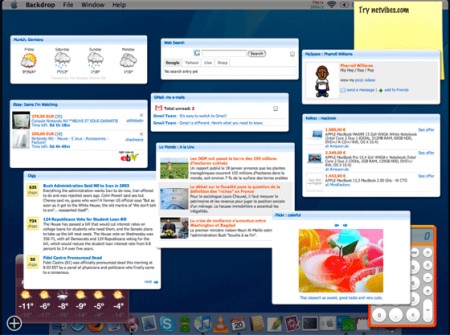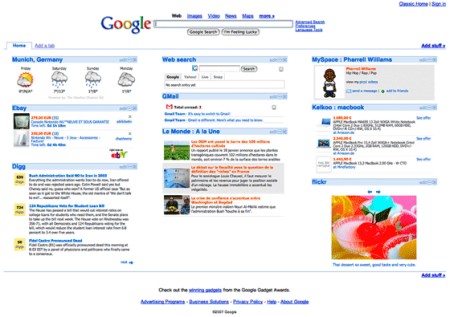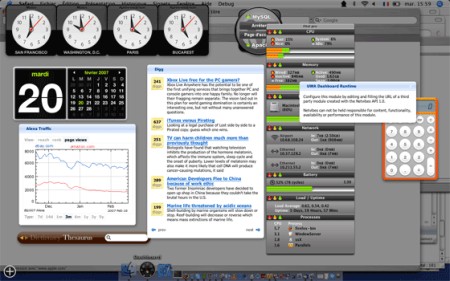Netvibes Widgets Will Be Cross-Platform
Web widgets and desktop widgets are small software modules, mini-applications that receive information via the Internet and are intended for implementation on a web page or on a desktop computer. The main idea of the widget is cross-platform. It is assumed that the same widget can be installed on any computer under any operating system. In practice, developers are experiencing enormous difficulties due to the incompatibility of engines for desktop widgets (Vista, Mac, Google, Yahoo), as well as numerous widget platforms for the web (Pageflakes, Netvibes, and many others). This is a really big problem, especially considering the importance of technology for the development of the web.
The W3C consortium has already developed a draft of the Widget 1.0 specifications , if adopted, at least minimal compatibility of the widgets will appear.
Another step towards the standardization of widgets took place yesterday at the Future of Web Applications conference in London, where Tariq Krim, founder of Netvibes , spoke. He announced that very soon they will release universal programming interfaces for the Universal Widget API widgets (codenamed Coriander), which will ensure full compatibility of branded widgets with any platforms. “Any widget created for Netvibes will also work on Vista, Google, Mac and Opera platforms,” said Tarik Krim. Support for Yahoo Widgets and other platforms will appear later. Thanks to open source, third-party developers can add support for others to the Universal Widget API. Less common platforms.
Porting the widget to another platform is done using one built-in script. It recognizes the platform and launches an adapted version of the widget. This way it will be much easier for sites to distribute their widgets: the only code will be suitable for most platforms.
')
The screenshots below show how Netvibes widgets run on Mac and on Google.



The W3C consortium has already developed a draft of the Widget 1.0 specifications , if adopted, at least minimal compatibility of the widgets will appear.
Another step towards the standardization of widgets took place yesterday at the Future of Web Applications conference in London, where Tariq Krim, founder of Netvibes , spoke. He announced that very soon they will release universal programming interfaces for the Universal Widget API widgets (codenamed Coriander), which will ensure full compatibility of branded widgets with any platforms. “Any widget created for Netvibes will also work on Vista, Google, Mac and Opera platforms,” said Tarik Krim. Support for Yahoo Widgets and other platforms will appear later. Thanks to open source, third-party developers can add support for others to the Universal Widget API. Less common platforms.
Porting the widget to another platform is done using one built-in script. It recognizes the platform and launches an adapted version of the widget. This way it will be much easier for sites to distribute their widgets: the only code will be suitable for most platforms.
')
The screenshots below show how Netvibes widgets run on Mac and on Google.



Source: https://habr.com/ru/post/5067/
All Articles